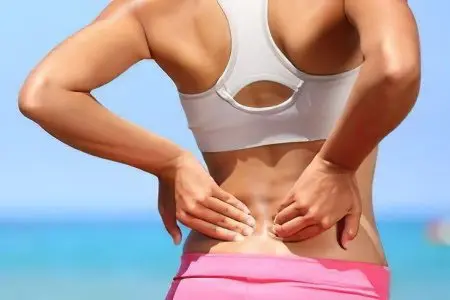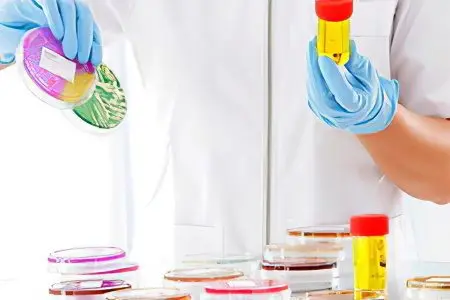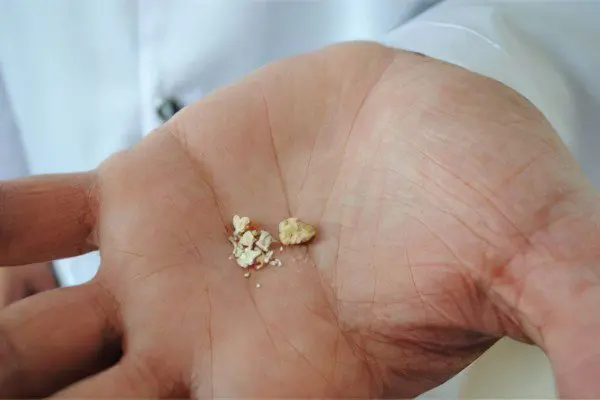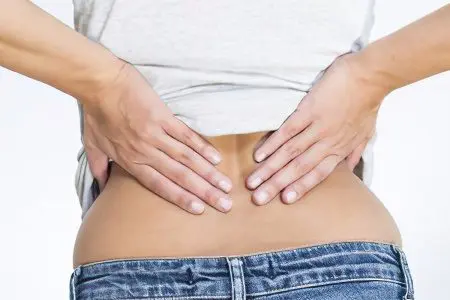Contents
- How to know if there are kidney stones?
- Can kidney stones be removed?
- Can kidney stones dissolve?
- Can a kidney stone come out on its own?
- Is it possible and necessary to crush kidney stones?
- Can I drink beer/alcohol with kidney stones?
- Is coffee safe for kidney stones?
- Is it possible to go to the bath with kidney stones?
- Can a kidney stone hurt?
- Can I take a diuretic for kidney stones?
- Can you see kidney stones on ultrasound?
- Do kidney stones grow?
- Is surgery always needed for kidney stones?
- Can kidney stones increase blood pressure?
- Can you die from kidney stones?

According to medical statistics, in regions endemic for nephrolithiasis, 7 out of 10 people have kidney stones of various sizes. Often this disease is provoked by too hard drinking water, an unbalanced diet. In a small number of people with urolithiasis, the stones go unnoticed, and the person does not notice it. But not everyone is so lucky – the spontaneous removal of stones can at any time provoke severe pain and serious consequences.
Modern methods of diagnosing and treating nephrolithiasis are being improved and make it possible to get rid of the disease without complications. The correct tactics of the behavior of patients with urolithiasis will accelerate recovery and alleviate negative symptoms.
When diagnosing urolithiasis, it is important to get rid of stones in a timely manner, if there are indications for this. There is a high risk of relapses and complications of nephrolithiasis, some of which significantly impair the quality of human life. To avoid the severe consequences of the disease, you need to know what is impossible and what you can do with urolithiasis.
How to know if there are kidney stones?

The definition of kidney stones is carried out by the following methods:
Plain radiography to determine the number and location of stones;
Ultrasound of the kidneys and urinary tract;
Excretory urography to determine the performance of the kidneys;
Spiral computed tomography;
General urine analysis to determine the concentration of salts, the presence of erythrocytes and leukocytes.
Before the onset of complications in the form of renal colic or pyelonephritis, the patient may not suspect that he has a kidney stone. In some cases, there may be dull pain in the lower back, a change in the type of urine – during urination, it is converted from thick to liquid and light. Perhaps the addition of a precipitate of a reddish or yellowish color.
Symptoms of renal colic are severe pain, radiating to the groin and lower abdomen, from which the patient cannot find a place for himself. Possible loss of consciousness, fever, fever.
Can kidney stones be removed?

There are 2 groups of methods for the treatment of urolithiasis: conservative and operative. This pathology refers to surgical diseases, therefore, operational techniques are more often used.
Factors influencing the choice of method for removing kidney stones:
Age and health status of the patient;
The size and location of the stones;
Features of the anatomy of the kidney and its functioning;
Existing stage of renal failure.
In the presence of urate stones arising from uric acid salts, their dissolution with citrate mixtures is possible.
In all other cases, lithotripsy is indicated:
Non-contact destruction of stones by electromagnetic, piezoelectric, electro-hydraulic shock wave – used in the presence of stones up to 2 cm in diameter, it is required to ensure the removal of fragments;
Percutaneous contact nephrolithotripsy – a kidney puncture is performed using an endoscope and the subsequent removal of the stone;
Urethrolithotripsy – an endoscope is inserted through the urethra.
In uncomplicated cases, one way to remove kidney stones with honey water can help. It is prepared from 2 tsp. honey dissolved in 200 ml of water. The mixture is drunk in the morning on an empty stomach. The course is continued from 1 to 6 months.
Can kidney stones dissolve?
A sufficient volume of ordinary water consumed by the patient during the day reduces the concentration of salts in the urine and lowers its acidity. This leads to the dissolution of urate stones of small diameter. If the stone has a mixed composition, this method may not help get rid of the stones.
Alkaline drinks and citrate preparations are used to dissolve oxalates and urate stones. They are taken additionally not only to dissolve stones, but also to prevent their formation after the operation of crushing stones.
Can a kidney stone come out on its own?
Approximately 13-15% of patients with urolithiasis can spontaneously pass stones of small diameter. With a transverse size of the ureter of 0,8 cm, it is important that this stone is not more than 1 cm in diameter. Small stones go unnoticed, the removal of larger specimens is accompanied by unpleasant symptoms. The exit of the stone can be provoked by physical activity, body vibration, the use of diuretic herbs and fees.
Is it possible and necessary to crush kidney stones?
Kidney stones can lead to inflammation (pyelonephritis), kidney failure, and organ loss. In the future, such severe consequences are stopped by kidney transplantation and hemodialysis (replacement therapy). If the doctor, based on the results of the examination, insists on an operation, his recommendations should be heeded.
Can I drink beer/alcohol with kidney stones?
There is a misconception that beer can dissolve kidney stones. This is not true, since most brands of this drink contain a large amount of preservatives and taste enhancers that negatively affect the functioning of this organ. An increased load on the urinary system leads to dehydration of the body, thickening of urine. Such consequences lead to the growth of existing stones.
Strong alcohol disrupts the functioning of the kidneys, leads to their intoxication, provokes the development of an inflammatory process in the renal pelvis. Against the background of urolithiasis and alcohol abuse, granular degeneration of the organ occurs, leading to kidney necrosis.
Is coffee safe for kidney stones?
No, it is not recommended to drink coffee with urolithiasis. According to research by Canadian nephrologists, caffeine dramatically increases the specific gravity of calcium in the urine. In addition, the urine of coffee lovers contains an increased amount of citrates, magnesium and other substances that contribute to the formation of stones. Caffeine has a diuretic effect, which thickens the urine and dehydrates the body. Increased urine concentration accelerates the formation of stones.
Is it possible to go to the bath with kidney stones?
Yes, bath procedures in a bath or in a sauna help to painlessly remove small formations from the kidneys or ureters, reduce the intensity of pain. Warm moist air helps to relax muscles and blood vessels, expand the ducts. A contraindication to visiting the bath is an attack of renal colic, since jumps in blood pressure often occur during it, and in a steam room this condition is dangerous.
Can a kidney stone hurt?

Stones located in the renal pelvis may not make themselves felt by any unpleasant sensations until they begin to move along the urinary tract. Occasionally, the patient feels a dull, exhausting pain, which increases with a change in body position or during physical exertion.
When a stone enters the ureter, a person suffering from urolithiasis feels a change in the nature of the pain. It is caused by renal colic, when the stone is pushed outward by the walls of the ureter, and its sharp edges injure the mucous membrane and underlying tissues. Cramping pain is so excruciating that it is almost impossible to eliminate it with conventional antispasmodics and analgesics. Pain sensations move from the lumbar region to the groin, lower abdomen, and are given to the genitals. Colic can last intermittently for several days. It is accompanied by painful urination, nausea, bloating, hyperthermia, sweating, blood in the urine. It is possible to get rid of pain with a large stone stuck in the ureter only in a hospital after crushing, after surgery.
Can I take a diuretic for kidney stones?
The use of kidney teas with a diuretic effect can provoke the movement of the stone and its exit into the ureter. Possible consequences of such self-treatment: renal colic, blockage of the ureter.
Can you see kidney stones on ultrasound?
With ultrasound, it is possible to detect stones of any composition from 3 mm in diameter. Modern ultrasound diagnostic devices are able to “see” smaller stones.
Do kidney stones grow?
Yes, the stones increase in size over time, as the salts found in food and water gradually layer on top of each other around the initial core.
Is surgery always needed for kidney stones?

Open surgery, despite the widespread use of minimally invasive stone removal methods, is still used to treat urolithiasis.
Indications for open surgery:
Exacerbations of chronic pyelonephritis;
The presence of staghorn stones with a decrease in kidney function by more than half;
Severe hematuria.
Performing the intervention, the doctor tries to minimally injure the kidney parenchyma. If the kidney has lost up to 80% of its functions, nephrectomy (removal of the kidney) is used.
Can kidney stones increase blood pressure?
Stones provoke the appearance of pyelonephritis, inflammation of the kidneys and adrenal glands leads to arterial hypertension. The mechanism of pressure increase is associated with an increase in blood volume in the vessels of the kidneys, a delay in the removal of fluid from the body.
Can you die from kidney stones?

It is impossible to die directly from urolithiasis.
But this dangerous disease has serious complications:
Hydronephrosis;
Renal failure;
Acute or chronic pyelonephritis;
Loss of one or even both kidneys.
The consequences and complications of nephrolithiasis significantly worsen the quality of life. Acute pyelonephritis, which arose against the background of urolithiasis, can end in a fatal outcome. Its symptoms are intoxication from the rapid multiplication of pathogenic bacteria (weakness, severe malaise), a drop in blood pressure due to bacterial shock. Occurs with the rapid course of complications, diagnostic errors, late use of antibiotics.









